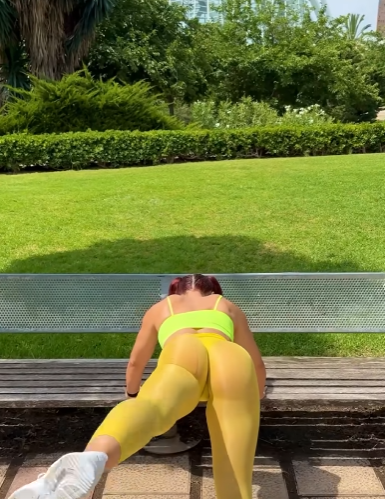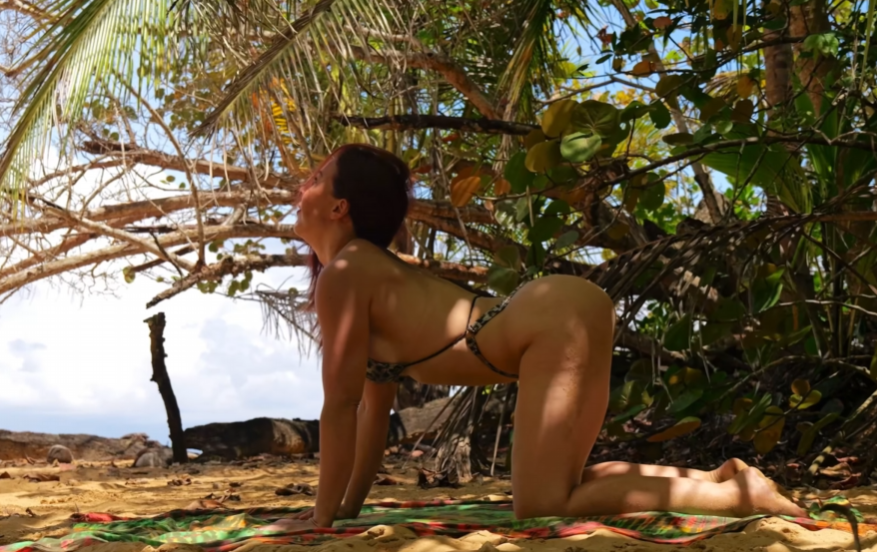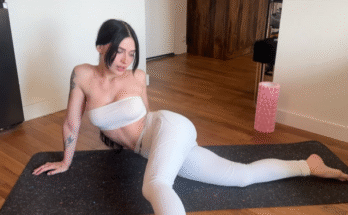
In our fast-paced world, finding moments of stillness and peace can feel like an impossible luxury. We wake up to alarms, rush through morning routines, spend hours working, scrolling, or managing family responsibilities, and often fall asleep without truly unwinding. Over time, this constant motion leaves the body tense, the mind restless, and the spirit drained. That is why yoga, especially a gentle flow designed to nurture relaxation, is one of the most powerful tools we can turn to. A well-structured yoga flow doesn’t just stretch your muscles—it balances your energy, calms your thoughts, and reconnects you with your inner self.
This article explores a simple yet effective yoga flow crafted specifically to relax the mind, body, and soul. You will learn about the benefits of each posture, how to breathe through the sequence, and how to turn your practice into a sacred ritual of peace.
Why Yoga for Relaxation?
Yoga is more than physical exercise. At its heart, yoga is about union—the alignment of body, mind, and spirit. When we practice yoga with awareness, every breath and every movement becomes a step toward harmony. A gentle flow helps release physical tension, soothe overactive thoughts, and invite a deep sense of inner stillness. Unlike intense workouts, a relaxation flow is about slowing down, tuning inward, and cultivating softness.
Some key benefits include:
- Physical relaxation: Stretching releases tightness in muscles caused by stress, desk work, or overactivity.
- Mental clarity: Focused breathing reduces racing thoughts and helps ground you in the present moment.
- Emotional healing: Restorative postures open the heart and allow suppressed feelings to be acknowledged and released.
- Spiritual nourishment: Silence and stillness reconnect you with your inner essence, bringing a sense of wholeness.

Preparing for the Flow
Before beginning, create a calming space. Roll out your mat in a quiet room. Dim the lights, light a candle, or play soft instrumental music. Have a blanket and pillow nearby in case you want extra support. Most importantly, set an intention—something simple like “I choose peace” or “I allow myself to rest.”
The Yoga Flow
This sequence can take about 30–40 minutes. You can extend or shorten it depending on your schedule. Move slowly, breathe deeply, and listen to your body.
1. Easy Seated Pose with Breath Awareness (Sukhasana)
How to practice:
Sit cross-legged with your spine tall. Place your hands on your knees or lap. Close your eyes. Inhale deeply through the nose, expanding your belly, and exhale fully. Stay here for 5 minutes, simply observing the rhythm of your breath.
Benefits:
- Anchors the mind in the present.
- Encourages diaphragmatic breathing to calm the nervous system.
- Sets a peaceful tone for the flow.
2. Cat-Cow Stretch (Marjaryasana-Bitilasana)
How to practice:
Come onto all fours with your wrists under shoulders and knees under hips. Inhale, arch your back, lift your chest, and gaze upward (Cow). Exhale, round your spine, tucking chin to chest (Cat). Flow gently for 8–10 rounds.
Benefits:
- Loosens the spine and relieves back tension.
- Synchronizes breath and movement to quiet the mind.
- Prepares the body for deeper postures.

3. Child’s Pose (Balasana)
How to practice:
From all fours, sit your hips back toward your heels and stretch your arms forward on the mat. Rest your forehead down. If needed, place a pillow under your torso or head. Hold for 3–5 minutes, breathing slowly.
Benefits:
- Deeply calming for the nervous system.
- Releases tightness in the lower back and hips.
- Symbolizes surrender, letting the body and mind soften.
4. Forward Fold (Uttanasana)
How to practice:
Stand tall, then hinge from the hips and fold forward, allowing your head and arms to hang. Slightly bend your knees to release tension. Hold for 1–2 minutes.
Benefits:
- Calms the brain and reduces anxiety.
- Stretches hamstrings and spine.
- Encourages introspection and inner quiet.
5. Standing Half Forward Bend (Ardha Uttanasana)
How to practice:
From Forward Fold, place fingertips on the floor or shins, lengthen your spine forward, and look down. Inhale to create space, exhale to release. Hold for 5 breaths, then return to Forward Fold.
Benefits:
- Lengthens the back body and improves posture.
- Creates a sense of expansion and openness.
6. Low Lunge (Anjaneyasana)
How to practice:
Step your right foot forward between your hands, lower your left knee, and lift your arms overhead. Breathe deeply for 5–8 breaths. Switch sides.
Benefits:
- Opens the hips, where stress and emotions often accumulate.
- Encourages grounding and balance.
- Builds gentle strength in the legs and back.

7. Seated Forward Bend (Paschimottanasana)
How to practice:
Sit with legs extended. Inhale, lengthen your spine, and exhale to fold forward over your legs. Keep your back long and relax your shoulders. Hold for 3–4 minutes.
Benefits:
- Relieves stress and fatigue.
- Stimulates digestion and soothes the nervous system.
- Brings a sense of turning inward.
8. Supine Spinal Twist (Supta Matsyendrasana)
How to practice:
Lie on your back. Hug your knees into your chest. Drop both knees to the right while extending your arms wide. Turn your head left. Hold for 1–2 minutes, then switch sides.
Benefits:
- Releases spinal tension.
- Massages internal organs for detoxification.
- Encourages deep relaxation and energy flow.
9. Legs-Up-the-Wall Pose (Viparita Karani)
How to practice:
Sit beside a wall and swing your legs up as you lie back. Rest your arms by your sides. Close your eyes and stay here for 5–10 minutes.
Benefits:
- Improves circulation and reduces swelling in the legs.
- Calms the heart rate and quiets the mind.
- Excellent for deep relaxation.

10. Final Relaxation (Savasana)
How to practice:
Lie flat on your back, arms and legs relaxed, palms facing upward. Close your eyes and let your whole body sink into the mat. Stay for at least 7–10 minutes.
Benefits:
- Integrates the benefits of your practice.
- Restores balance to the nervous system.
- Brings profound stillness to body, mind, and soul.
The Role of Breath
Throughout this flow, your breath is the bridge between body and mind. Try practicing ujjayi breathing—a soft, ocean-like sound created by gently constricting the throat while inhaling and exhaling through the nose. This steady breath calms the nervous system and anchors awareness in the present.
If ujjayi feels difficult, simply focus on slow, deep belly breaths. Inhale fully, pause, exhale completely. Every breath is an invitation to release tension and embrace peace.
Making It a Ritual
For lasting benefits, practice this flow regularly—perhaps every evening before bed, or in the morning before the day begins. Over time, it becomes more than exercise; it becomes a ritual of self-care. You can enhance the experience by:
- Journaling for 5 minutes afterward to reflect on your inner state.
- Practicing gratitude by silently naming three things you are thankful for.
- Ending with a short meditation or mantra, such as “I am calm, I am whole.”
Closing Thoughts
In a world full of noise, yoga offers a sanctuary of silence. This gentle flow to relax the mind, body, and soul is not about perfection or pushing limits—it’s about surrender. Each pose, each breath, is a reminder that you carry peace within you.
When practiced with intention, this flow becomes more than movement—it becomes meditation in motion, a pathway back to balance. So roll out your mat, breathe deeply, and allow yourself to soften. The more you practice, the more you’ll notice: the body feels lighter, the mind clearer, and the soul nourished.
Yoga reminds us of a simple truth: relaxation is not a luxury—it is a necessity. And with each flow, we rediscover our natural state of calm, compassion, and connection.



